“Here comes the sun, do, dun, do, do
Here comes the sun, and I say
It’s all right
Little darling, it’s been a long cold lonely…”
…2020, to pick up where the Beatles left off. A great deal has happened since the ball dropped in Times Square on January 1st to the tune of Auld Lang Syne. Prince Harry and Meghan Markle stepped down as senior royals, the UK left the EU, Parasite swept the Oscars, the stock market crashed, protests rose up across the globe, and there was a pretty big election in the US too.
And just in case it wasn’t already on your mind, we saw the onset and spread of a global pandemic – one which we are still in the thick of managing.

In the blink of an eye, we went from being on a journey towards digitization to living in a wholly digital world – and torpid organizations had to scramble to survive. With service agents seeing call volumes skyrocket, retailers facing an influx of impatient online shoppers, and employees everywhere struggling to adapt to a remote work reality, five-year digital transformation projects suddenly needed to be completed … yesterday in order to manage demand and simultaneously ramp up to provide digital experiences à la Amazon.
This put an incredible amount of pressure on IT leaders to adopt, adapt, and implement leading-edge technologies, like AI and cloud computing, and continue to manage a wide variety of pre-existing applications, on-premises systems, and devices. That’s a tall order, but for many, a Relevance platform proved to be the lyrical sun at the end of a long, cold, lonely winter.
Plenty of vendors say they can unify data from across all systems and apply AI to generate a holistic understanding of both content and users that are interacting with it. But that promise is not always met with a secure and scalable manner of delivery.
A true Relevance platform will help you accelerate your digital transformation, but only if it has the elements you need. So let’s dig into the 10 features that you should be thinking about as you enter 2021:
1) Crawling Modules and Custom Connectors
Despite the rapid adoption of cloud solutions, 90% of companies still run on-premises server hardware – resulting in hybrid content management. Security and governance concerns are often what stand in the way of undergoing efforts to migrate on-premises applications to the cloud.
While these concerns are valid, the lack of migration prevents on-premises content from being indexed, meaning that it cannot be used to better serve your customers and employees alike. Informational gaps for the sake of robust security isn’t a tradeoff you should have to make – and with the right features in place, you won’t have to do so.

If your security policies don’t allow an inbound port in your firewall to access on-premises content, when evaluating a Relevance platform, you should ensure that it comes with a crawling module that runs outside of the platform, behind the firewall, and is integrated with the customer’s environment.
A crawling module designed in this manner enables it to pull content from on-premises systems and push it to the search index, without raising any red flags when it comes to security.
Additionally, in the spirit of leveraging your many data sources, your Relevance platform should come equipped with not only effective connectors but also a software developer kit to help build custom connectors to any source that might be holding precious information.
2) Ranking Rules Management
You should have full visibility of the rules surrounding search results ranking. The ability to combine featured results and ranking expressions together in one place is key to effectively managing ranking rules, making it a critical component to look for in a Relevance platform.
In addition to having a clear view of the various factors influencing your ranking, you should also look for flexibility when it comes to the timing of their activation. While you will certainly need permanent sets of rules for standard use, i.e. Groups, you may also wish to have timed sets of rules for specific promotions, i.e. Campaigns. A Relevance platform should grant you the ability to create and manage both from a central location with ease:
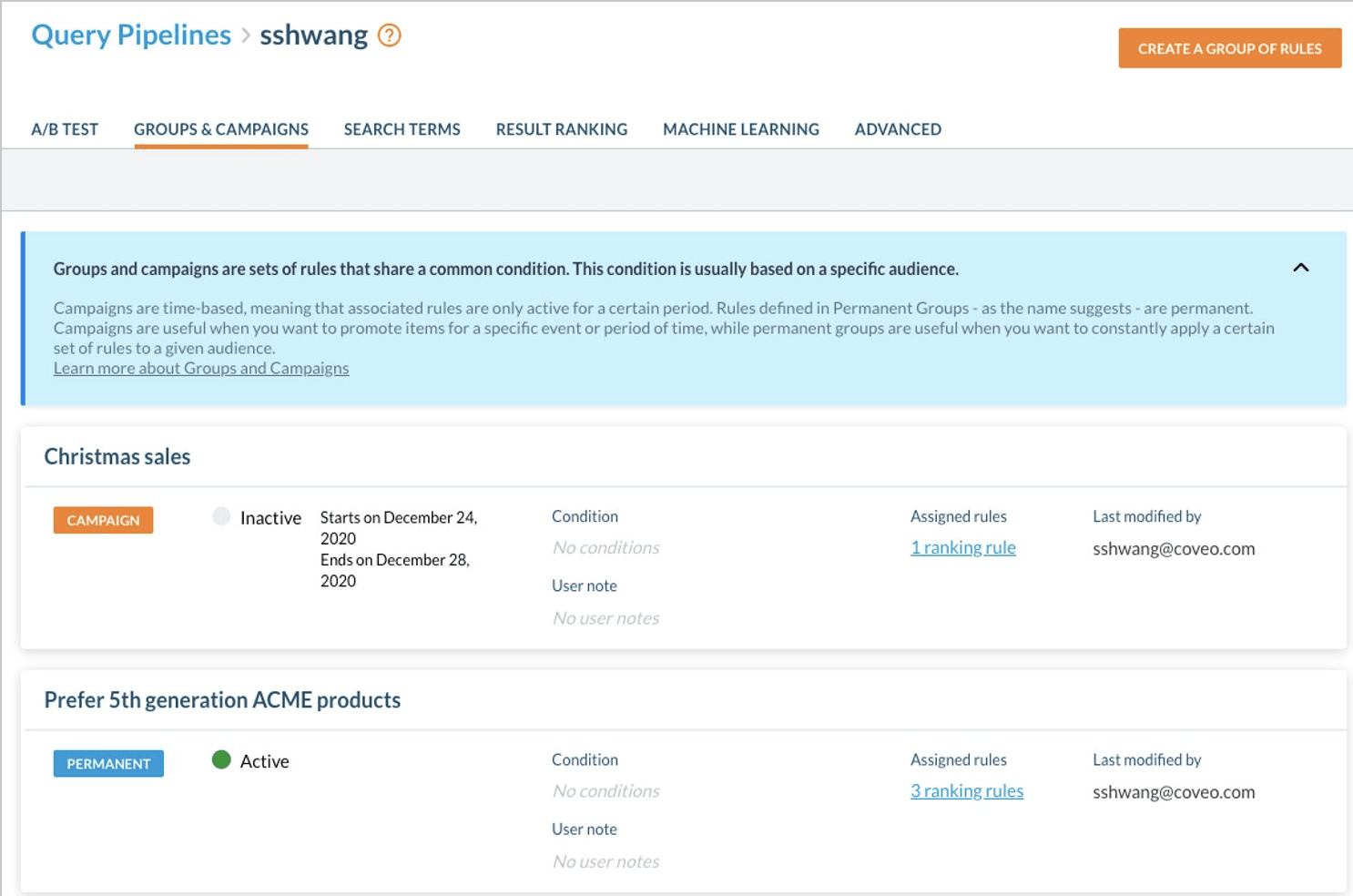
3) Dynamic Facets
Chances are that the volume of data at your disposal is growing quickly – and the proliferation of metadata in your index is getting more difficult for you and your end users to manage. It’s no wonder that the Enterprise Metadata Management Market is projected to be worth 7.85 billion USD by 2022.
Static facets won’t help much, as they have the potential to be highly irrelevant in relation to what a user is looking for – e.g., “dimensions” won’t help if the user has already specified those dimensions in the query itself.
Customizing facets to the individual user can be powerful in helping them cut through the noise to find what they need, but they can also be difficult to manage: What values should you show, in what order should you present those values, where should you pre-filter?
A Relevance platform should come with dynamic facets powered by AI, as AI can answer all of the above questions and act upon the answers for you without any intervention. By feeding usage data to machine learning algorithms, they’ll be able to determine what the most appropriate facets are, as well as what values should be used and in what order.
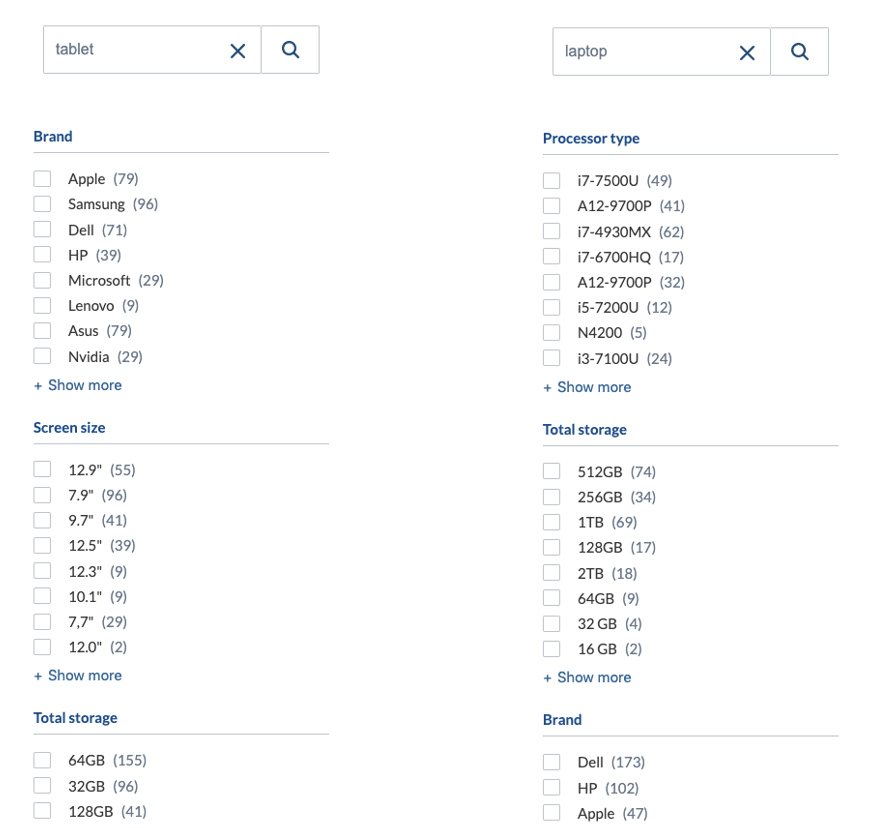
4) Question Answering
Voice platforms are changing how we interact with search. Most people are no longer using keywords and boolean operators to find what they need. Queries are now more conversational in that they are written out as actual questions.
In fact, almost 70% of requests to the Google Assistant are expressed in natural language, not the typical keywords people type in a web search.
Now wouldn’t it be great if, given a user query, you could extract the most relevant answer from a list returned by the index and throw it to the top of the search results list, without any manual intervention or reformulation of content required?
With Smart Snippets you can do just that, making them a must-have feature for any Relevance platform.
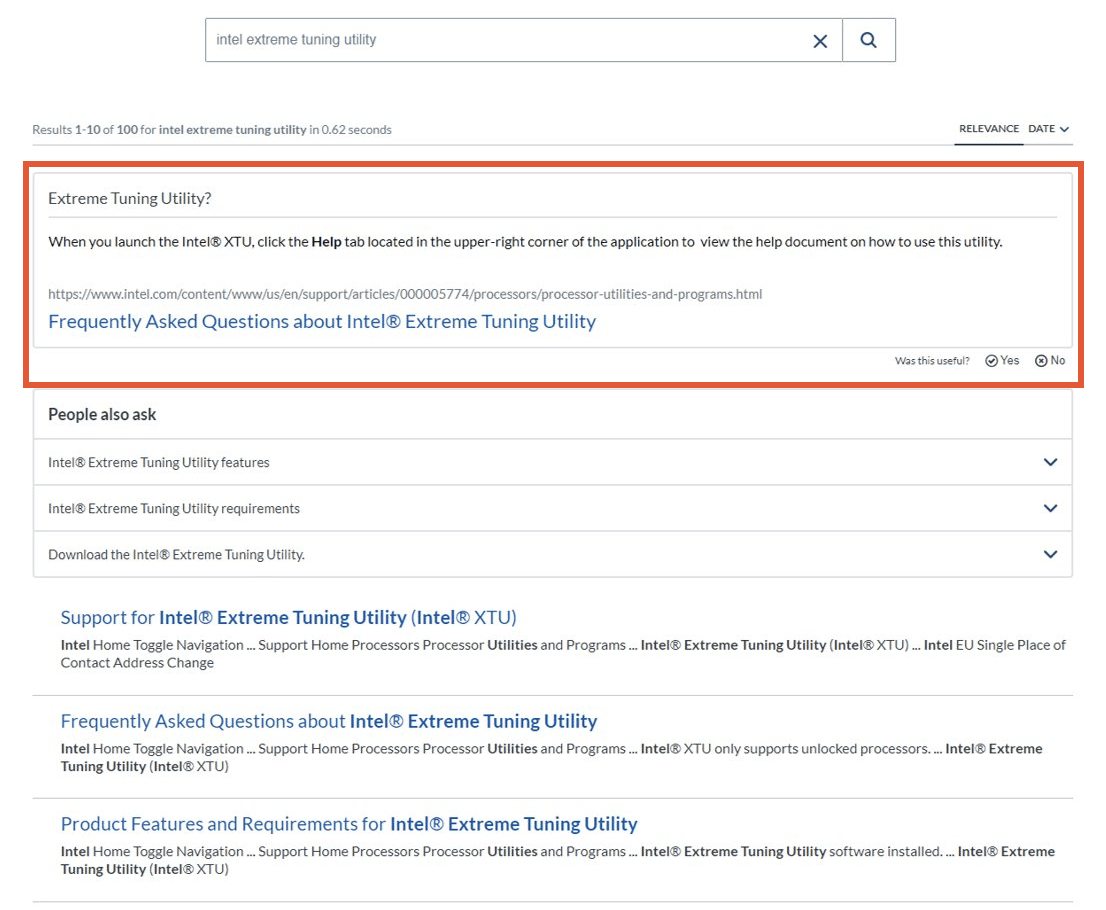
5) Personalized Recommendations
In a digital world, recommendations effectively enable you to guide your users by the hand to find what they need – whether that be informational content or products.
And given that expectations surrounding personalized digital experiences are sky high, persona-based recommendations are not enough – they must be tailored to the individual. This means that they should not only be shown what they know they need in the moment, but what they didn’t know they needed along with it and what they might need next.
Now, given that bounce rates are also high – in Ecommerce the average sits around 45% – you need to be able to provide this experience to all users, quickly, even if they are a first-time visitor. If recommendations were confined to being history-based, this would be impossible, but, thankfully, they are not.
A Relevance platform that utilizes a recommender system (1) based on product associations and (2) driven by in-session actions can anticipate what an unknown visitor needs – and provide it to them in turn.
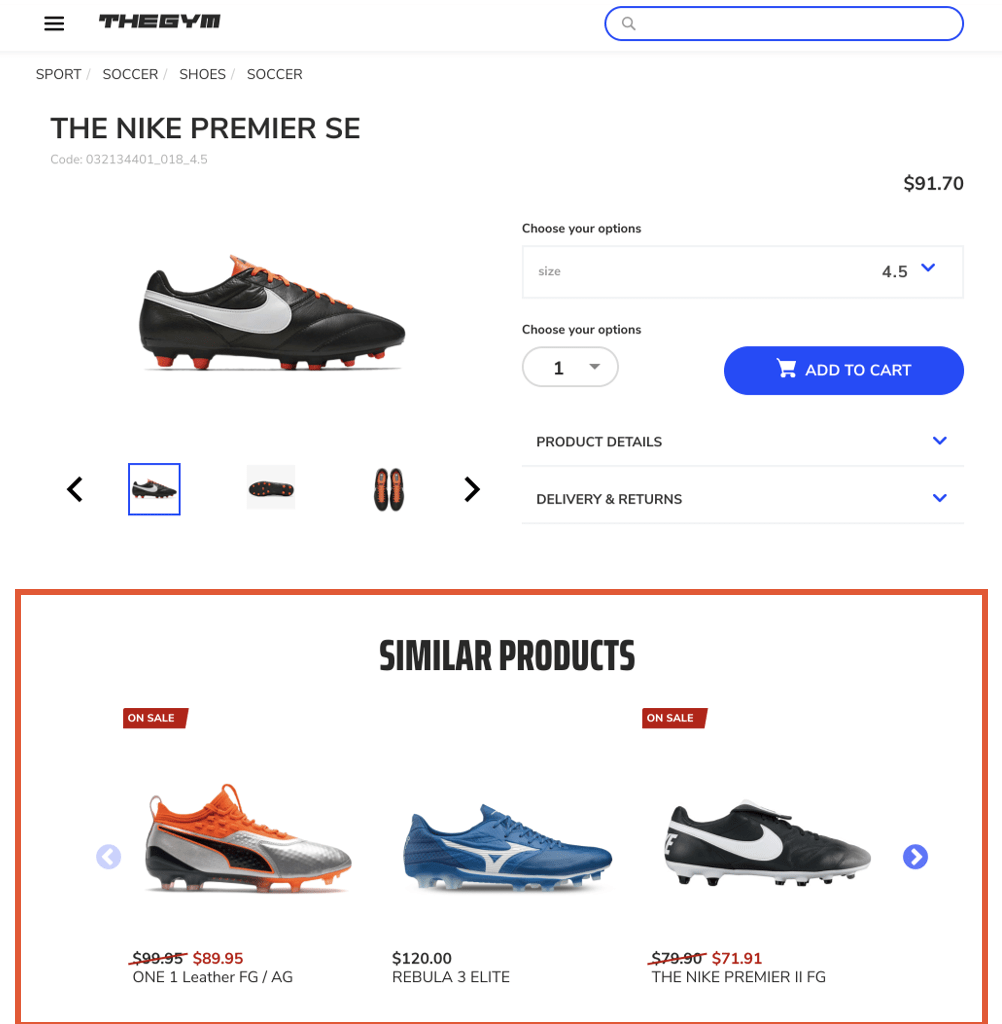
6) In-Product Experience
Product-led growth is quickly becoming the top go-to-market strategy – and given that the median enterprise value (EV) of PLG companies is 2X higher than the public SaaS index as a whole, it’s certainly not a bad move. For those that choose to employ it, success is dependent on enhancing in-product engagement and communication.
One effective method for doing so is to improve in-product help. Now, standard in-product help is by no means an uncommon feature. However, the results are static and not contextually aware. In other words, they are irrelevant.
By adopting a platform that applies AI on top of robust search to give rise to personalized recommendations (see section above), you also attain the ability to deliver in-app contextual help and surface help and documentation based on a user’s specific context – i.e., their current page and what they have already viewed up to that point.
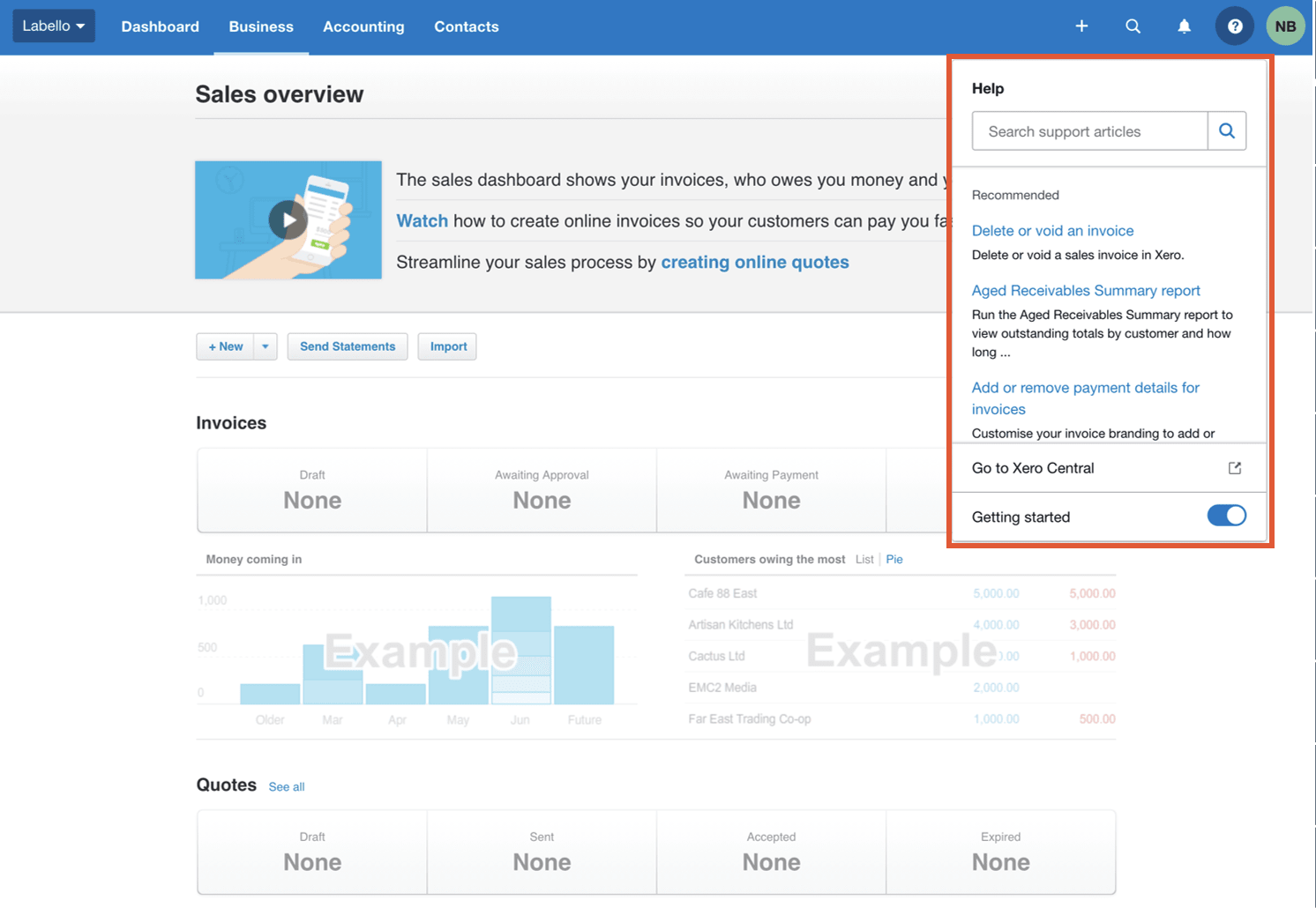
That being said, a Relevance platform should allow you to integrate your search UI into your different applications so that you can surface helpful content in a contextual manner inside the product itself. Product use and adoption will soar.
7) Headless UI Components
Traditional Javascript UI frameworks have proven to be highly useful for front-end developers. However, with the rise of multichannel marketing and the proliferation of digital touchpoints, they have proven to be limiting. Developers want greater flexibility and control when it comes to design.

The solution? Headless UI components.
If your organization has a strong UX team, with specific guidelines for how search UI should look and feel, you want to ensure that the Relevance platform you adopt has a robust library of components that can be recreated in any UI framework.
8) Speedy Builds
Building custom components is valuable, but moving from ideation to creation to integration to rule building to configuration can take so much time. And long build times ultimately slow down the development process.
To speed up build times, look for a Relevance platform that comes with (1) an accelerator to build custom components, (2) a means to unify multiple code bases using different stacks with one build process, as well as (3) a collection of crowd-sourced components to help turbocharge implementations.
9) Critical Updates
Relevance platforms are cloud-based, so updates to improve performance and underlying logic are released frequently and take effect instantly.
Given that these releases can impact customizations, it is beneficial to go with a provider that not only gives you advanced notice of changes that are going to happen within the platform but also the ability to jump into a sandbox and test drive those changes before they are actually applied.

10) Data Residency
The General Data Protection Regulation (GDPR) created new, legally-mandated compliances that must be met by both EU-based organizations and organizations that supply a good or service to the EU. And the regulations surrounding the geographical storage of data are constantly changing.

The best way to deal with the uncertainty is to ensure that you have the ability to collect, process, and store your data in whatever country you conduct business. A Relevance platform should offer you the ability to choose the region in which your data is stored – and have a comprehensive list of regions from which to pick.
Dig Deeper
To learn more about these critical features, the role they play in catching up to compete in today’s digital world, and how we make use of them – be sure to watch our webinar: New in Coveo – A 2020 Year-in-Review.
If you’re already using Coveo and want to discover how to leverage these features for yourself right now, check out the related documentation below:


